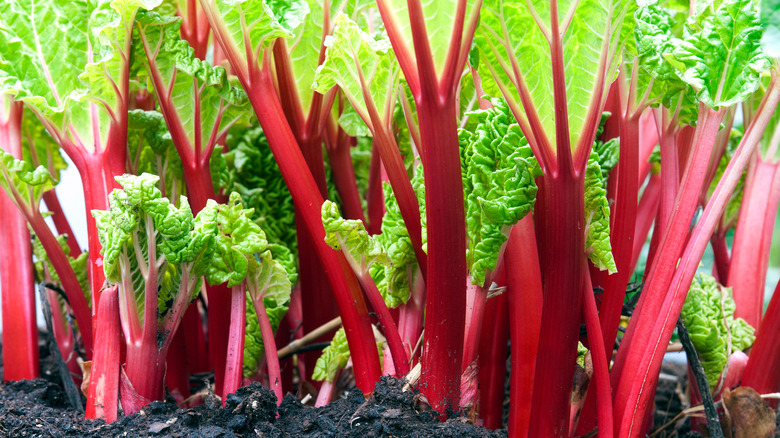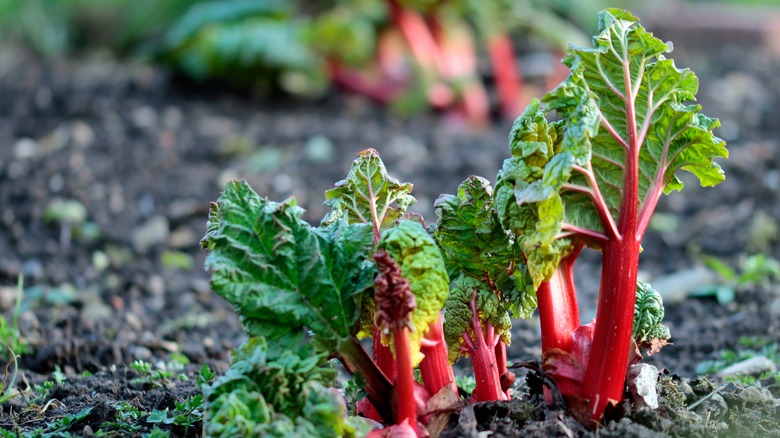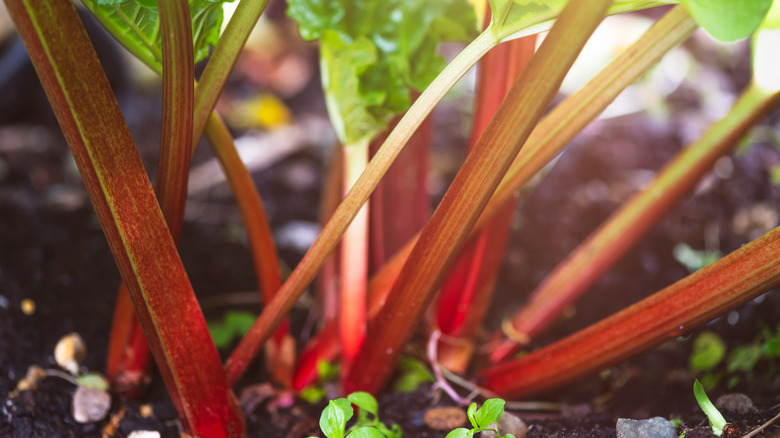Why You Don't Want Your Rhubarb Plant To Flower
Rhubarb is one of the shining ingredients of spring and summer pies, but it isn't exclusively relevant to baked goods. The acidic, stalky vegetable is often used in sweet treats, but it can also be added to savory dishes. It also has lots of beneficial nutritional qualities, including being high in antioxidants and aiding in lowering cholesterol.
The red vegetable is native to colder climates, where it begins to grow in the early spring. If you live in the appropriate climate to grow rhubarb, it's a great addition to your vegetable garden. The perennial crop needs lots of sun and moist, rich soil. Other than that, once established, rhubarb plants aren't too high maintenance, and can be harvestable for many years to come. However, there are some issues that may arise during the plant's lifetime. All plants are susceptible to issues like bugs and disease, but rhubarbs have a unique issue to look out for — flowering stalks.
Shorter stalks
Flowers are almost always a welcome addition to your garden — almost. They attract pollinators, spread seeds, and are generally pleasant to look at. But however pretty they may be, they could be an issue for the overall health of your rhubarb plant.
Seeing a flower on your rhubarb plant doesn't indicate anything detrimental, but it could develop into an issue down the line. Once a flower has sprouted, the plant will send all its energy toward supporting it. As a result, your rhubarb stalks and leaves will be small and short, and overall a little lackluster. The fix is incredibly simple, though: Keep an eye on your rhubarbs, and if you see flowers start to sprout, cut them off immediately. Make sure to get as close to the base as possible to prevent regrowth, and use clean, sharp shears or scissors to make sure there's minimal damage to the plant and no transfer of bacteria.
Other potential issues
Rhubarbs are generally pretty resilient plants, but that doesn't mean there aren't potential diseases they can contract. Most of them are a product of the environment they need to grow in, so it's a good idea to monitor not just the crop itself, but your weather conditions.
Anthracnose stalk rot is one of these potential illnesses rhubarbs can succumb to. Rhubarbs prefer cool, moist conditions, but if their environment is too wet, the stalks can begin to rot. If this is treated immediately, then it shouldn't spread to other stalks. However, if left untreated — especially if left untreated into the winter — it can damage all your plants. The rot manifests first as wilted leaves and stalks with lesions, and then it will begin to turn black before collapsing.
To remedy this type of rot, simply remove infected rhubarb stalks and monitor healthy ones for signs of rot. Fertilizing your rhubarbs regularly can also help them not only stave off Anthracnose stalk rot, but other potential diseases like crown and root rot or leaf spots.


